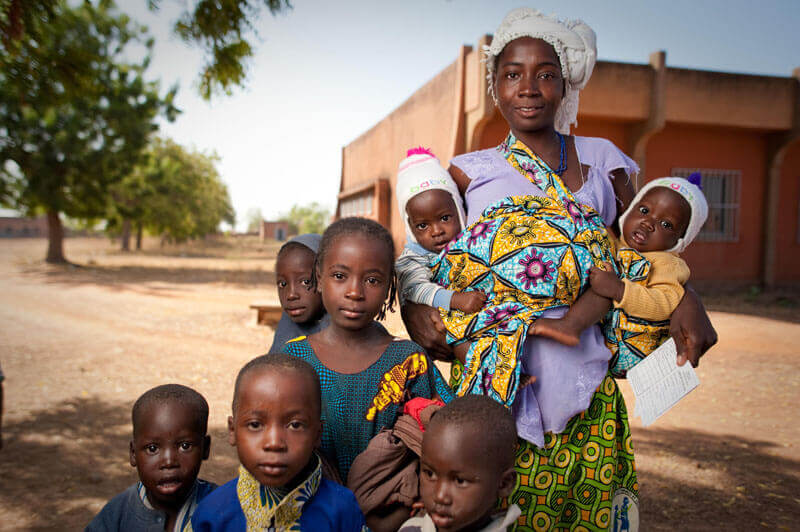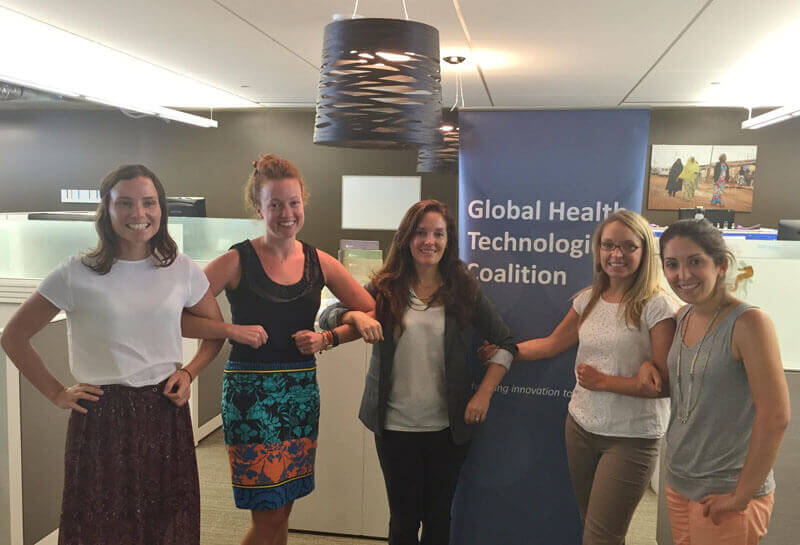In this guest post, Heather Ignatius—senior policy and advocacy officer at PATH—writes about a new bipartisan piece of legislation to accelerate progress towards ending preventable child and maternal deaths. More than 30 diverse organizations including PATH are calling on members of Congress to support the legislation, and you can add your voice to the call by joining their virtual “chain” of people around the world who believe we must do all we can to #SaveMomandKids.

- The Reach Act aims to accelerate an end to preventable maternal and child deaths. Photo: PATH/Gabe Bienczycki
Today Senator Susan Collins (R-ME) and Senator Chris Coons (D-DE) introduced a new bipartisan piece of legislation that could help save the lives of
women and children around the world. This legislation—the Reach Every Mother and Child Act (Reach Act)—aims to end preventable maternal,
newborn, and child deaths within a generation by putting into place US policies to reach more women and children with lifesaving programs and support
the development, introduction, and scale-up of high-impact interventions in low-income countries.
Reach Act reaffirms America’s commitment to end preventable maternal, newborn, and child deaths
In 2012, the United States, the governments of Ethiopia and India, and UNICEF led the Child Survival Call to Action,
committing to end preventable child and maternal deaths by 2035—a commitment that has since been endorsed by 175 partner governments around
the world. The Reach Act would make it the policy of the United States to make good on that promise and put in place a coordinated, whole-of-government
strategy to achieve it.
The legislation calls for the US to set ambitious, outcome-based targets for reducing child and maternal deaths and track and report progress toward
them annually. It also calls for improved coordination across US government agencies, establishes a maternal and child survival coordinator position
at the US Agency for International Development (USAID) to oversee activities, and would expand the use of innovative financing mechanisms that
will help countries overcome financial hurdles and obtain more resources to strengthen health programs, ultimately moving countries towards greater
self-sustainability in confronting their own health challenges.
Reach Act ensures innovation is part of the US government strategy to achieve this aim
Improvements in maternal and child health have been one of the greatest success stories in international development. Since 1990, deaths of mothers
and children under the age of five worldwide have been nearly cut in half—meaning every day 17,000 more children live and 700 more mothers
survive childbirth compared to just two decades ago.
Central to that progress has been research and development (R&D) of new and innovative health products. For example, new vaccines, drugs, diagnostics,
and other health innovations have led to 4.2 million fewer child deaths in 2013 compared to 1990, according to a report by the Institute for Health Metrics and Evaluation.
Advances in maternal and child health have been driven by the development of new approaches and innovative technologies. Many of these breakthroughs—such
as bed nets to prevent malaria, oral rehydration therapy to treat diarrheal disease, and antiretrovirals to treat HIV and AIDS—were supported
or piloted by US government funded programs, demonstrating the power of US investment in innovation to save the lives of mothers and children.
Ending preventable maternal, newborn, and child deaths is an ambitious goal, but it’s also an achievable one—and investing in health innovation
can help us get there. According to the Lancet Commission on Investing in Health,
the world can achieve a “grand convergence”—reducing maternal and child deaths in low-income countries to low levels within a generation—by
increasing investment in the R&D of new technologies and the scale-up of existing technologies.
The Reach legislation would ensure that R&D is a critical part of the US approach to ending preventable maternal, newborn, and child deaths. As
the lead US agency working in maternal, newborn, and child health, USAID has long placed global health R&D and innovation at the core of its
activities to end extreme poverty and build resilient societies. The agency has helped to support the development and introduction of a range of
affordable and cost-effective technologies including easy-to-use diagnostic tests for HIV and AIDS, malaria, and tuberculosis; innovative contraceptive
technologies; treatments to reduce neonatal infection and postpartum hemorrhage; and vaccines against leading childhood killers like meningitis.
The agency has sought to harness expertise and resources across sectors and geographies to catalyze the development of health technologies to improve
maternal and child health. Through programs like the Saving Lives at Birth: A Grand Challenge for Development,
USAID has advanced innovative solutions for maternal and child health, such as simple pouches to deliver drugs to reduce mother-to-child transmission
of HIV and AIDS and devices to help babies take their first breath.
The Reach Act challenges policymakers at USAID and other US agencies to continue to think long-term about the role innovation could play in achieving
an end to preventable maternal, child, and newborn deaths.

- The GHTC staff has joined the global chain to #SaveMomsandKids
Innovation will be necessary to bend the curve
Last year in its Acting on the Call report, USAID
articulated a roadmap to achieve the vision of ending preventable and maternal deaths in 24 priority countries, setting an interim milestone of
saving 15 million children and 600,000 women by 2020. If achieved, meeting this milestone would mean that US programs would be exceeding the impact
targets set in 2012. The development and introduction of new health technologies can further accelerate progress toward this goal—helping
us bend the curve more steeply and saving more lives, more rapidly.
Now is the time for Congress to turn ambition into action. The Reach Act can help us realize a world where every kid everywhere lives to celebrate
his or her fifth birthday and no mother dies as a result of pregnancy or childbirth.
- Read a fact sheet about the legislation.
- Watch a video of Sen. Collins and Coons introducing the legislation.
- To support the legislation, join the social media campaign using the hashtag #SaveMomsandKids.


